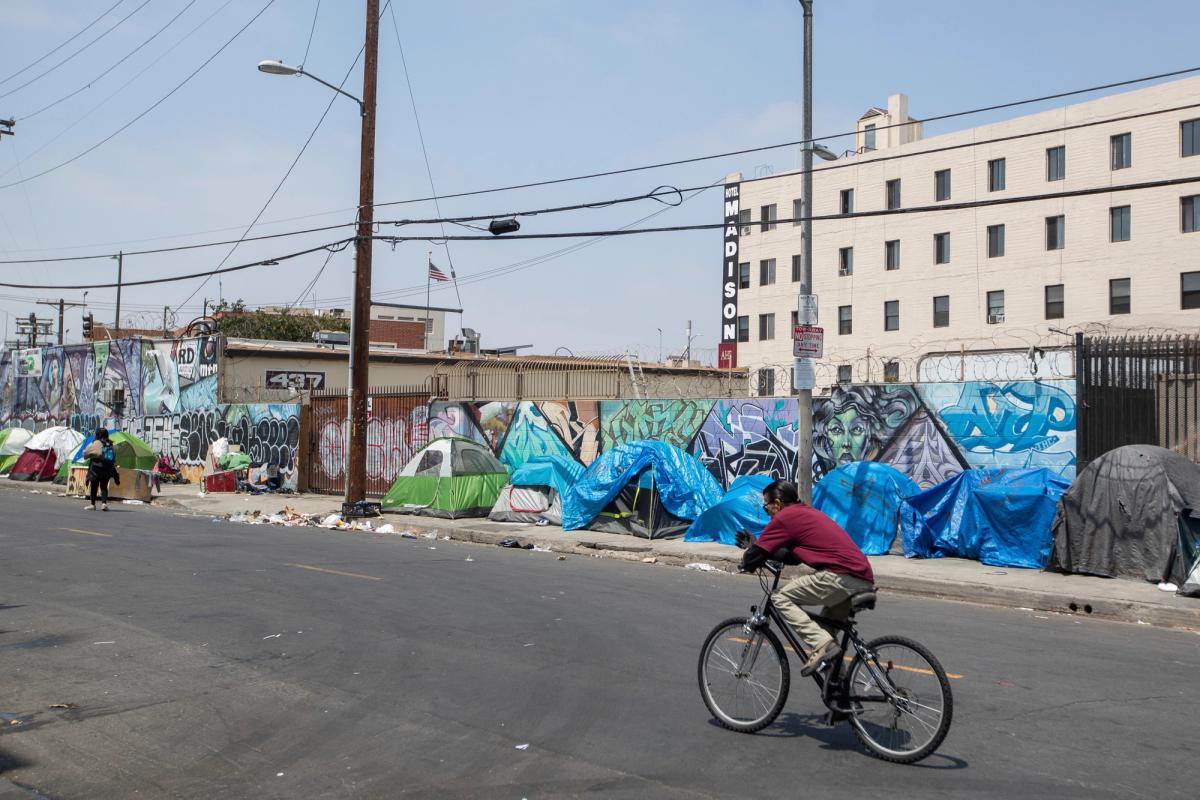In symposium this week, the Goethe-Institut Los Angeles convenes architects and scholars from around the globe for a week of discussions, performances, and panels on homelessness and housing precarity. Worlds of Homelessness (until 27 October) brings an international perspective to the city’s ongoing homelessness crisis and aims to foster meaningful dialogue and cross-cultural exchanges on the global rise of housing insecurity, while interrogating how fields of design and architecture interact with homeless communities.
Events explore the linkage between homelessness, housing access more broadly, and related issues such as “the gap between rich and poor, participation, inequality, gentrification, race, [and] migration,” explains the Goethe Institut’s Lien Heidenreich-Selme.
“All these issues are obviously connected,” she says. “We tried to bring together local and international artists, architects, scholars and others, to offer a platform to share ideas, thoughts, and to present their work and examine different ways of engagement.”
Dialogues scheduled throughout the week survey homelessness and housing access from vantage points around the globe and address specific projects implemented in cities such as Johannesburg and Medellin, and novel approaches to housing precarity like mixed housing, collective housing, and informal settlements. Each panel includes a speaker from Los Angeles, while others hail from locales including Berlin, Frankfurt, and Vienna.
The project’s interdisciplinary approach focuses on bridging the gap between architects and city planners and the homeless communities they ostensibly serve.
“What was important to us was to speak not about homelessness, but also with people who have the lived experience,” says Heidenreich-Selme.
On Tuesday, the Muralist and rapper Crushow Herring aka ShowzArt, a prolific artist well known in the Skid Row neighborhood, joined UCLA’s Ananya Roy, urban ethnographer Michele Lancione, and Barbara Schönig from the Bauhaus-Universität Weimar for the introductory discussion framing the project and week’s events, and brings a perspective from inside Skid Row.
The week also opened with a musical performance from the LA Playmakers and closes with the two-day 10th Annual Festival for All Skid Row Artists, hosted by the arts non-profit and performance group the Los Angeles Poverty Department (LAPD), which counts among the organizations partnering with the German cultural embassy. Founded by director-performer-activist John Malpede in 1985, the group works throughout the community to make Skid Row more livable, culturally rich and engages in activism.
Southern California’s storied experimental architecture school SCI-Arc, the Thomas Mann House, the Institute on Inequality and Democracy at UCLA Luskin, and the cultural organization NAVEL are also working with the Goethe Institut and featured prominently in the programming.
“There are a lot of conversations going on about design ideas, but if you really look at what is happening, despite the goodwill of trying to build housing, sometimes [homeless] communities don’t accept it, or the communities in which they are built don’t accept it,” Heidenreich-Selme says. “So all of these architects have developed interesting strategies to engage with both the homeless community and communities where the housing is being built.”
The event comes amid a media frenzy on homelessness in the state of California, which reportedly spiked in Los Angeles 16% this year, according to City Lab, and has led to some politicians calling for a state of emergency to be declared.


